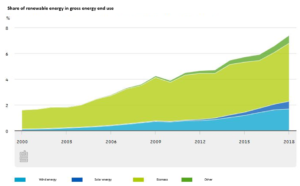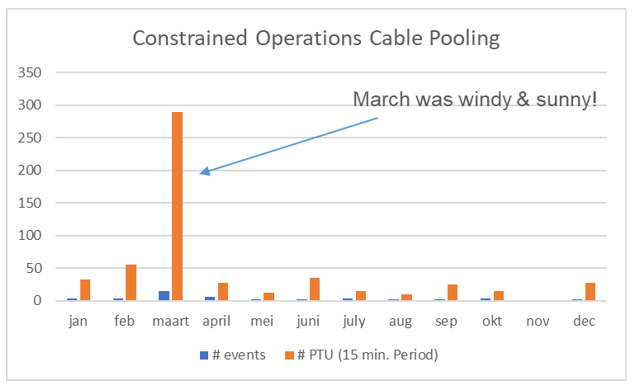Read more about this challenge in the links: https://www.vemw.nl/ and https://www.volkskrant.nl and MLOEA

Cable Pooling for Solar
The Energy Transition in the Netherlands is well on its way. Various projects are being developed; there is ample SDE support available and many households, businesses and industrials are eager to “off take” green power. The result; on the one hand steady growth in renewable generation and on the other a grid network which is struggling to keep up. Currently there are huge delays in getting grid connections at the locations where renewable generation is installed.
Cable Pooling can offer a solution to insufficient connection capacity. Cable Pooling is, as the name suggests, ‘pooling’ of the connection capacity. Multiple generation capacity on a single grid connection. Pooling the grid connection or “MLOEA” is most feasible in situations where a solar park can be installed close to an existing wind park with a grid connection. Cable pooling can also be applied on an industrial location with an existing connection capacity, which can accommodate a wind/solar park. In both situations, the new generation installation can be connected via the existing grid connection. Cable Pooling offers an effective and efficient solution to grid connection constraints.
How does this work?
The situation:
- You have a 10 MW wind park.
- You have a 10 MW connection.
- You have a plot of land nearby which is suitable for a 5 MW solar park.
The problem
- You require a grid connection to go forward with your project, but the grid company is unable to offer you the required connection capacity. The grid company estimates that it will take more than 5 years to be able to offer this connection, which can potentially derail your project and the chance to receive financial investment.
The solution
- Cable Pooling offers the solution. Both the 10 MW wind park and the new 5 MW solar park can be connected to the grid on the existing cable connection. By doing so, you not only save on costs and time associated with a new grid connection, your investment is also independent of the delays and issues associated with grid connections and grid companies.

How can you deal with the costs associated with missed production?
Are there downsides to combining two different technologies especially when it is a combination of wind and solar technologies? Are there associated costs? How can you deal with the costs associated with lowered energy production in situations where both technologies produced maximum output?
There are few days in a year when maximum power output from a wind park and a solar park coincide (very windy days coinciding with very sunny days). In the situations where the maximum output of both technologies coincides, one of the two would need to be curtailed as the grid connection will not support both at maximum. How often do such situations occur? Which of the two technologies should you curtail and how often? What is the decrease in power produced and what is the loss in revenue? Can you still use the so called “SDE tracker” to de-risk your project and benefit from the subsidy?
We at Priogen have conducted a feasibility study with one of our partner companies. We used data from our own portfolio of wind and solar parks and scaled it to a 10 MW wind park, a 10 MVA connection and a 5 MW solar park. Here are our conclusions*
*all numbers stated are based on the example of a 10 MW wind park, a 5 MW solar park and a 10 MVA grid connection
Conclusions:
- Curtailment will be required approx. 50 days in a year
- The duration of the curtailment varies between 15 minutes and 8 hours.
- Curtailment is applicable approx. 1.5% of the time annually.
- The missed energy output is circa 0.4% of the combined production. This is (in above case) circa 13,000 euros annually.
- In case all the curtailment occurs on solar production, 98% of the unconstrained solar output is achieved annually. The annual production volume used in your business case will then be P50 value multiplied by 0.98

